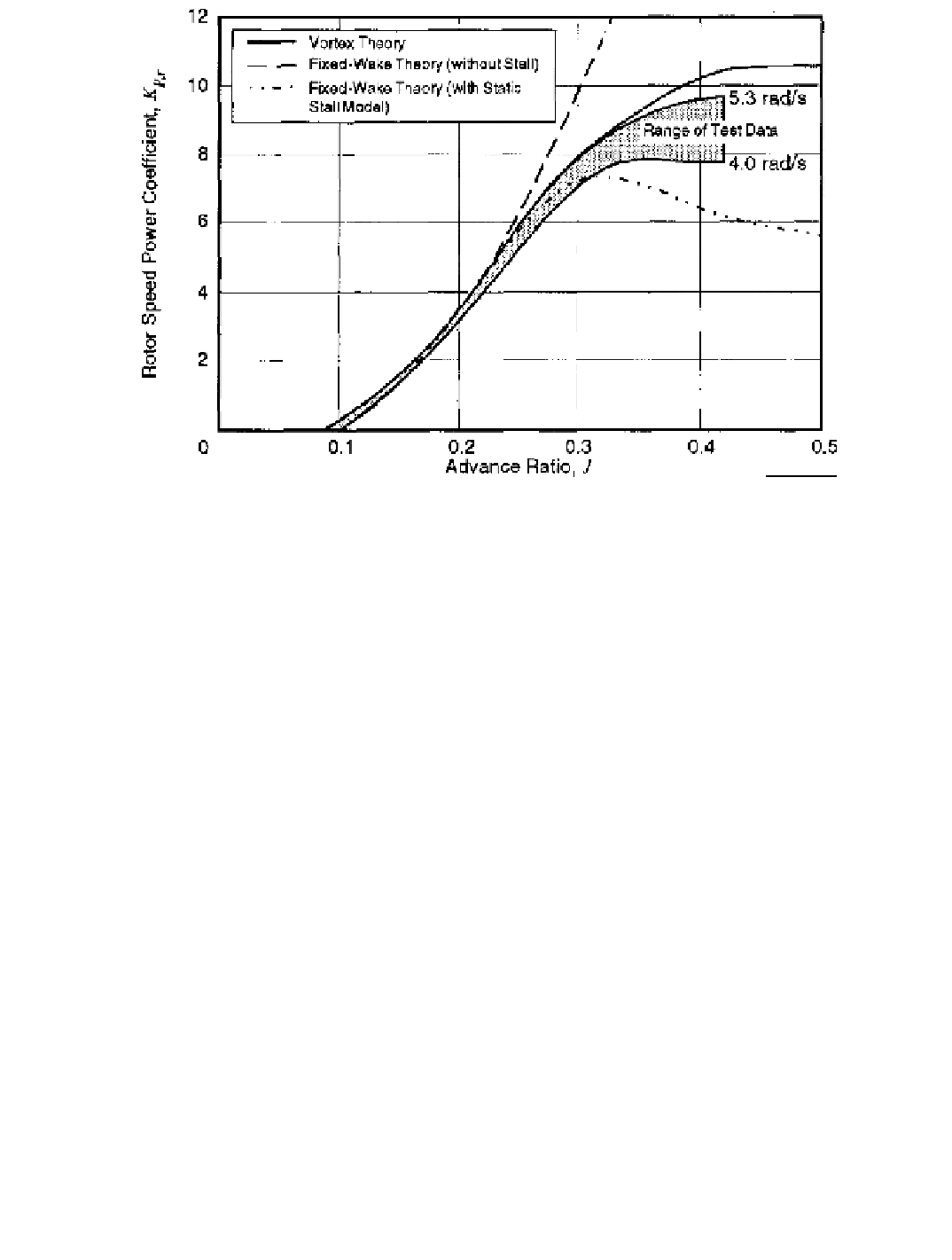Environmental Engineering Reference
In-Depth Information
Figure 5-38. Experimental and theoretical dimensionless power curves for the Sandia/
DOE 17-m VAWT.
Test data and vortex theory are the same as in Figure 5-37. Fixed-wake
theory from [Wilson and Walker 1981]
energy output of this VAWT or in evaluating various aerodynamic theories. Of more impor-
tance is performance at higher advance ratios, or (equivalently) tip-speed ratios less than that
for
C
P
, max
. It can be seen in Figure 5-38 that the power curves flatten at higher advance ratios,
an effect attributed to increasing amounts of stall. Power levels trend upward with increasing
rotor speed, reflecting the benefits of higher Reynolds Number and lower angles of attack.
Two additional theoretical predictions are shown in Figure 3-38. These are based on
fixed-wake theory
,
with and without static stall
in the airfoil properties [Wilson and Walker
1981]. At high advance ratios (
i.e.
high wind speeds), fixed-wake theory without stall over-
predicts the measured power by large amounts. Note, however, that measured peak power
levels trend toward the theoretical unstalled performance with increasing rotor speed. When
static stall properties are added to the fixed-wake theory, the predicted power curve flattens
at higher advance ratios and then drops below the test data. This latter behavior emphasizes
the role of. stall in reducing VAWT power at high wind speeds, and at the same time indicates
that the transient stall experienced by the rotating blade is not as fully-developed as static
stall.
A final comparison between experimental and theoretical VAWT performance is shown
in Figure 5-39. Here, the 17-m test data are compared with predictions made with three
streamtube theories:
multiple streamtube with static stall
[Strickland 1975],
double-multiple
streamtube with static stall
[Parashiviou 1981], and
double-multiple streamtube with dynam-
ic stall
[Berg 1983]. When static stall data are used, the streamtube and fixed-wake theories
give much the same predictions of power, and these are in good agreement with test data at
the most energy-productive advance ratios of a VAWT. With the addition of a dynamic stall
model, correlation between test data and streamtube theory at high advance ratios becomes
equivalent to that of the more-accurate vortex theory.

Search WWH ::

Custom Search